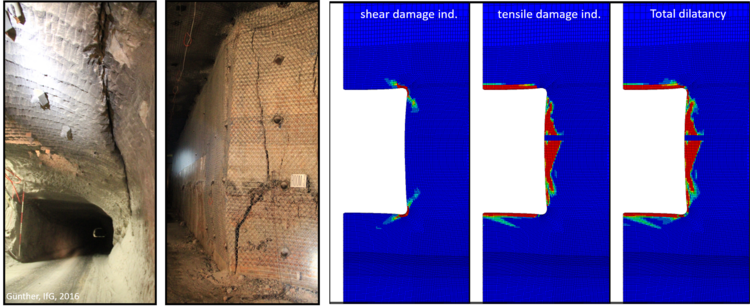WEIMOS: Further Development and Qualification of Rock Mechanical Modelling for HAW Disposal in Rock Salt

| Led by: | Dr.-Ing. Dirk Zapf |
| Team: | Dr.-Ing. Savas Yildirim |
| Year: | 2021 |
| Funding: | BMWi |
| Duration: | 01.04.2016 – 30.09.2021 |
Description:
For the permanent disposal of highly radioactive, heat-generating waste, final disposal in deep geological formations is seen worldwide as the only way to dispose of the waste safely, sustainably and in an environmentally compatible manner. The purpose of deep geological disposal is to isolate the hazardous waste from the biosphere for a very long period of time by means of a suitable barrier (geological, geotechnical, technical) in order to prevent harmful effects on the population and the environment.
In Germany, rock salt is one of the host rocks being considered. Geomechanical calculations are required for planning, dimensioning, construction and operation as well as for long-term safety analyses. The suitability of the host rock must be proven on the basis of forecast calculations.
The WEIMOS project pursues the overall objective of documenting, reviewing, comparing and improving instruments for the verification of the safe disposal of high-level active waste (HAW) in deep rock salt formations. The instruments investigated here consist of material models with which the thermo-mechanical and hydraulic behaviour of the host rock under various influences is described in simulation calculations and reliably extrapolated into the future. On the other hand, procedures for determining characteristic, salt-type-specific parameter values and procedures for the numerical modelling of underground structures in rock salt have a decisive influence on the accuracy and informative value of the calculation results for the description and behaviour of a repository system.
The focus of the joint project is on the further development and qualification of rock mechanical modelling for HAW disposal in rock salt, here focussing on shallow disposal.














